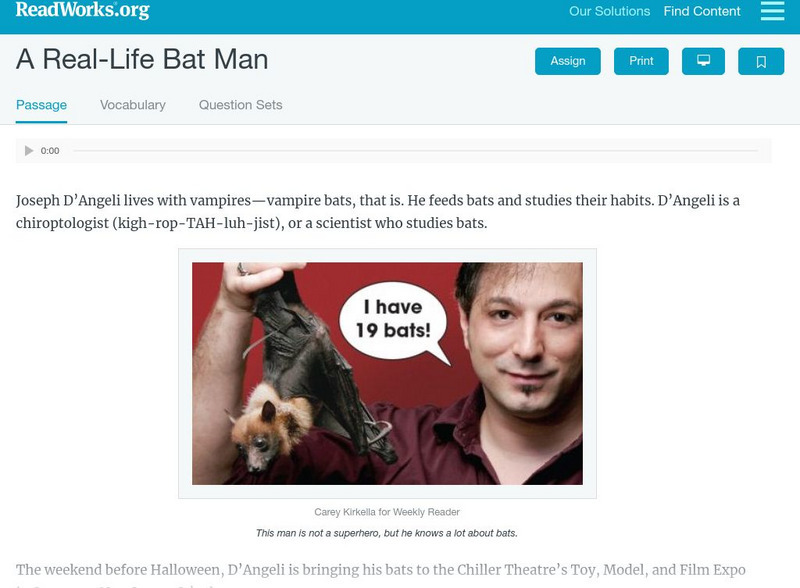Read Works
Read Works: Fatty Foods
[Free Registration/Login Required] This informational text passage discusses the effects of fattening foods. This passage is a stand-alone curricular piece that reinforces essential reading skills and strategies and establishes...
Read Works
Read Works: A Real Life Bat Man
[Free Registration/Login Required] This passage describes the responsibilities of a chiroptologist, a person who studies bats for a living. This passage is a stand-alone curricular piece that reinforces essential reading skills and...
Love To Know Media
Your Dictionary: Literary Terms Lesson Plan
This is a lesson plan for teaching the seven literary terms used in poetry: simile, metaphor, alliteration, imagery, hyperbole, personification, and onomatopoeia.


